
views
Waxing Your Legs

Schedule a professional waxing appointment. Waxing is arguably the best-known, most common method of dealing with leg hair at the roots. If you get your legs waxed at a salon, the process will be less painful as opposed to a home treatment. You can get your hair waxed for anywhere from $35-80 at a salon. Your skin will be smooth for three weeks on average. After that, it'll be time to return to the salon for another session.
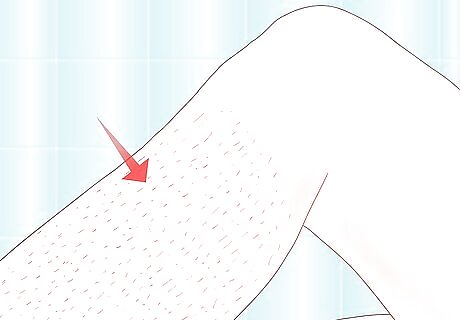
Give your hair some growing time. Although latest advances in waxing technology will allow you to wax your skin earlier than before, you still need to let hair grow to 2-4mm. Although no one likes having to wait for their hair to grow, 2 millimetres is barely anything, any you'll have it waxed off in no tie. Allowing your hair to grow longer may result in a more painful tear. 2-4mm may not be enough for cheaper waxing strips. It's a good idea to follow the instructions of whatever kit you're using.
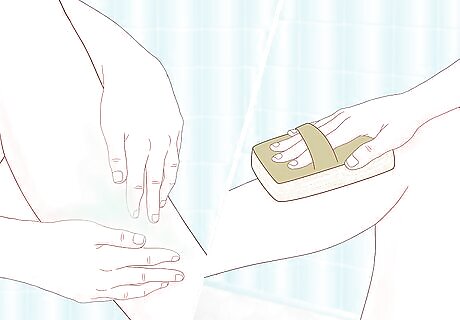
Exfoliate prior to waxing. Exfoliating your skin with an abrasive loofah and a moisturizing cream will help maximize the waxing strips' grip on your hairs. Try to do it a day in advance; that way, you can limit the risk of irritating your skin.
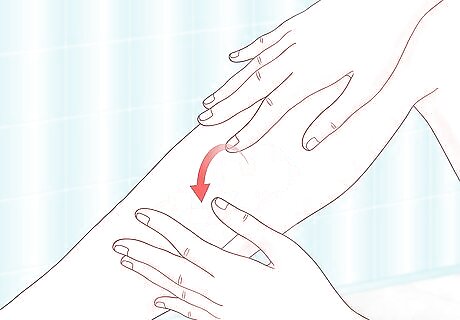
Apply strips to your legs. Heat the wax according to the instructions of the particular kit you're using, and apply it to your skin in the direction the hair grows in. You can rub them vigorously, or hold them over a candle until they heat. Apply the strips evenly, and make sure they're relatively smooth on your skin before you tear them off. You can also make hair removal wax at home, if you're the DIY type.

Tear them off quickly. Speed is the key in making your waxing as painless as possible. Take your strips at the end at pull them off as you would a band-aid. Tear it away in a short, swift motion. It also helps to wax during a time where you're not feeling otherwise rushed or stressed. The body is more receptive to pain when your nerves are frayed.
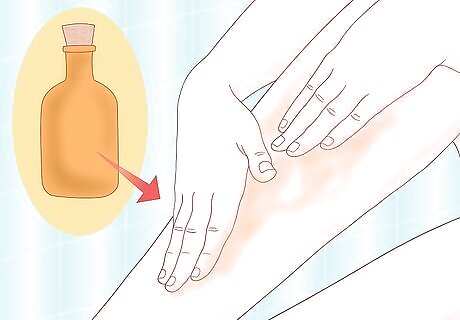
Take care of your skin afterwards. Giving your skin a soft oil-based massage can help to alleviate some of the pain or irritation the waxing strips may have caused you. Waxing strips are a great way of getting rid of your fur for a few weeks, but anyone who does it regularly will swear by the grief it causes. Putting a relaxing reward at the end of it all can make the entire process easier to withstand.
Shaving Your Legs
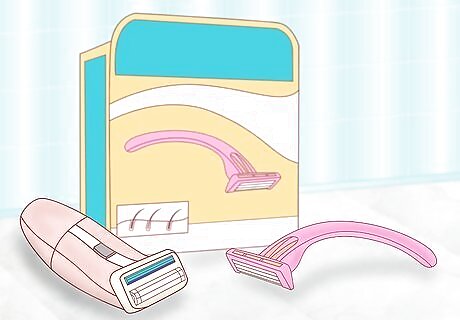
Choose a razor blade. Shaving hair is arguably the most common way of removing leg hair. While it may not take hair out at the roots like waxing, it's relatively easy and pain-free to do. Purchase a quality razor from the health section at your local supermarket. Women's razors and men's razors are relatively the same. The only difference is that women's razors are designed to hug around natural curves in the body. Electric razors are also available, but won't result in as close of a shave. Getting cut by the razor blade indicates you may need to replace the razor. Razors are durable, but you should switch them up when they begin losing their efficiency. It is important to use a new, clean razor blade to keep your skin healthy and avoid razor bumps. If you shave your legs regularly, change the blade often.
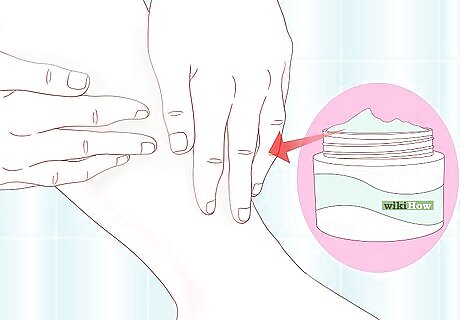
Apply a shaving gel. It is recommended you use shave gel when you shave. Soap and water alone will dry out the skin. Have a quick shower to moisten the body and open up your pores. Following that, lather the shaving gel over the area you're going to be shaving. It can be helpful to apply gel to a certain area and shave that before moving to other parts.
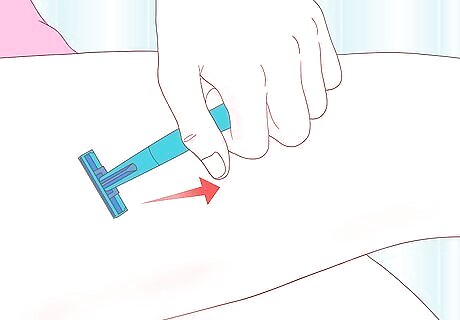
Shave in the direction your hair grows in. You maximize your ability to catch hairs in your razor if you shave along with the grain. Shave down the leg before you shave up. It's a good idea to run the razor along your skin in a gentle, smooth motion. Sudden, jerky movements or thoughtless angles can risk you accidentally cutting yourself.
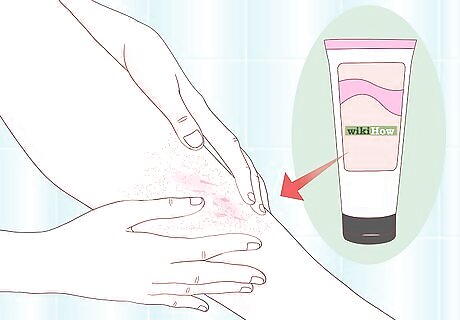
Treat razor burn. Razor burn occurs if you try to shave too closely. If left untreated, it can result in ingrown hairs, which are a bother to tend to. If you get nicked or burned, apply an exfoliating body scrub to the area and give your skin some care. Rub the affected area and remove dead or damaged skin flakes from the area.
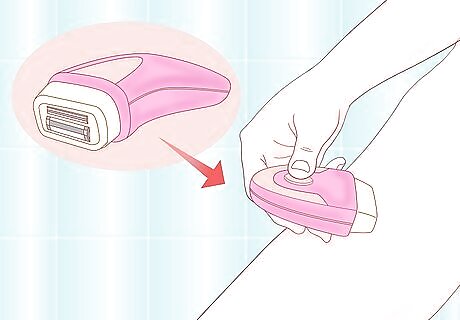
Tend your legs with an electric shaver. Because electric shavers can be used without first moistening the skin, they're a perfect thing to take along with you on the go. Although it won't leave your legs hairless for as long of a time, the quickness and convenience makes it a good way to deal with it if you're in a pinch for time. Electric shavers require a degree of maintenance. Change your electric razor blade annually, assuming you're using it on a semi-frequent basis.
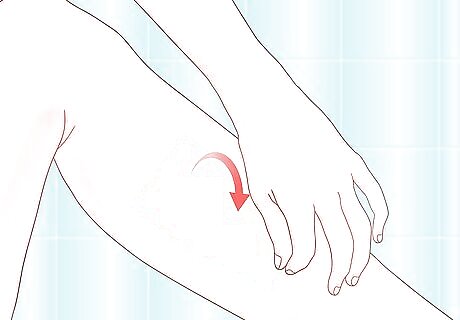
Consider switching to a root removal method. While shaving is usually the most painless hair removal method, a shave doesn't last very long. Shaving leaves the hair follicles intact, meaning that the hair will grow back in a few days. Additionally, shaving can lead to razor burn, dry skin, bumps/nicks, and possible cuts. Ingrown hairs might form as well. Consider switching to an alternate method that removes the hair at the root.
Exploring Other Professional Treatments

Use an epilator. Epilators are handheld machines that remove hair by pulling out individual hairs by their roots. On the plus side, they result in an incredibly smooth feeling comparable with waxing. However, because you're removing the hairs one at a time, epilating your legs may take quite a while. One benefit that epilators have over waxing is the fact that they can pull out hairs as short as 0.5mm. This means you never have to wait for the hair to grow out before you remove it again. Taking hairs out from the root never feels pleasant. Although some may find the epilator less painful than waxing, the discomfort lasts a lot longer. Aesthetician Alicia Ramos suggests taking a bath before you epilate: "Soaking in warm water helps loosen the [hair] follicles and will mean that you have to do fewer passes to do the job. Really dry off after your bath and make sure your leg is free of any oils or anything that will make it difficult for the epilator to grip the hair you're trying to remove."

Apply a depilatory cream. Depilatory creams work to dissolve hair on the surface of your skin without irritating the skin itself. Lather the cream gently onto your skin and leave it for ten minutes while it does its work. Once enough time has passed, the hairs will come off along with the cream when you wipe it away from your legs. Depilatory creams can be found in the health section of your local supermarket. You can also purchase a number of versions online.
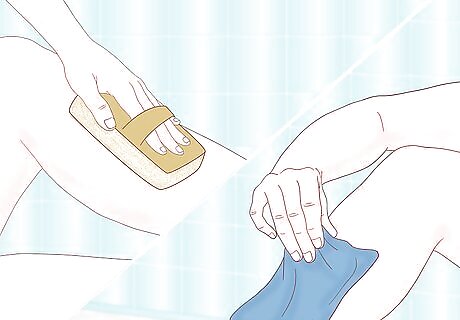
Fight ingrown hairs. Hair follicles sometimes re-enter the skin and can't be waxed or epilated. Prevention is key here, so exfoliate often and follow up with a moisturizer. A loofah or body cloth works well with delicate skin, while a body scrub or gel exfoliate can tackle tough skin. Don't skip exfoliation: even a bit of simple sugar scrub will make a difference. This is also a great way to make your legs smoother. Keep in mind, however, that too much of exfoliation can irritate your skin. A great place to start is one good exfoliation once a week or even once every other week.
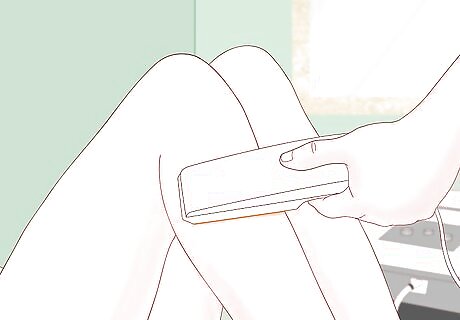
Consider laser hair removal. Laser surgery is considered extreme by some people, but there's no arguing with results. Concentrated lasers will work to destroy follicles completely. The affected hair will fall out within 2-3 weeks. It will make your legs deeply smooth, and you will avoid the irritation of shaving or other procedures. However, it is notably more expensive than home-based treatments, and requires several trips back to the Doctor's office before the procedure is complete. If you have particularly thick leg hair, you may have to schedule more appointments than the average.




















Comments
0 comment